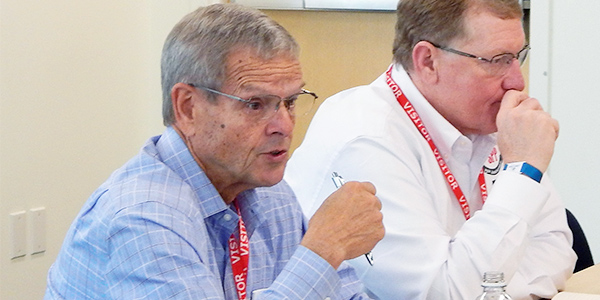With SPP stakeholders unable to reach consensus on how to modify the RTO’s congestion-hedging practices, the Strategic Planning Committee has taken matters into its own hands and will see if it can come up with a solution.
At issue is the Holistic Integrated Tariff Team’s recommendation last year to add counterflow optimization (CFO), limited to excess auction revenues, to SPP’s market mechanism that hedges load against congestion charges. (See SPP Board Approves HITT’s Recommendations.)
The Market Working Group took up the charge, reviewing 11 different proposals, including the status quo. Seven of those received support from either the RTO, the MWG or the Market Monitoring Unit, but not enough to reach consensus. The remaining four proposals were not supported by anyone.
“We’ve been informed by the MWG that, while [it] worked diligently to address this issue, [it] has concluded [it] can’t bring specific issues back to the table with broad-based support,” SPP Board of Directors Chair Larry Altenbaumer said during a Sept. 16 meeting of the Strategic Planning Committee, which he also chairs.
“My sense is we may be at a point where rather than trying to put this forward for an immediate answer,” he said, “we have a chance to step back and take an overall assessment before stepping forward.”
To do so, Altenbaumer will be relying on Director Graham Edwards, who served on the HITT; Dogwood Energy’s Rob Janssen, who was the team’s vice chair; and NextEra Energy Resources’ Holly Carias, who chairs the Markets and Operations Policy Committee. Altenbaumer told the SPC that he has asked the three to further study automated counterflow. They will be assisted by SPP staff and receive input from the MMU.
Altenbaumer said the group’s only charge is to maintain the HITT’s recommendation. They are to present their findings to the board and MOPC in January.
“If the sense is we come back and say the status quo is unbalanced, that’s an OK answer. If they say it’s good for now, that’s an OK answer,” Altenbaumer said. “This situation is not unique to SPP. At least one other RTO is working through this process at the same time. Whatever can be gained in conversations with them can be a benefit to us as well.”
SPP’s current congestion-hedging practice is to allow market participants to nominate counterflow on a voluntary basis. Because it is a charge, participants are less likely to nominate, staff said.
The grid operator has been working since 2016 with participants, who are split over the system’s effectiveness, on changes to the market design. SPP supports automated counterflow to solve the current practice’s inequity, while the MMU said it is supportive of the status quo only over a solution that uses CFO.
The Monitor broke down the various proposals into two boxes: those using CFO and those not. In the former category, American Electric Power put forth a pre-auction, direct assignment of counterflows with opt-in/opt-out flexibility, while Oklahoma Gas & Electric suggested earmarking CFO dollars from the previous year, with the CFO method to be determined later.
In the non-CFO bucket, Nebraska Public Power District proposed partially modifying the excess auction revenue distribution method. The MMU opted for a more-than-partial modification of the revenue.
“Without addressing the underlying issues, the MMU believes the solutions being discussed today are really treating the symptoms,” the Monitor’s John Luallen said. “They have little to do with congestion patterns. They all represent a redistribution of congestion-hedging revenues between participants.”
Luallen said all congestion-hedging products derive their value from the day-ahead market’s congestion rent, which is unchanged by automated counterflow. He warned that the HITT’s proposed framework creates risk because load-serving entities, as a whole, will receive less revenue than they would without the counterflow.
Two factors determine whether automated counterflow creates value for LSEs, Luallen said: the change in the congestion rent received, net of cost, and the change in the auction revenue received.
Altenbaumer agreed with Luallen, saying both proposal categories “may be trying to address the symptoms rather than the underlying issues.”
“My desire is to come up with a solution that creates greater overall value or a situation or outcome that produces better efficiency in our markets or creates greater overall fairness in our market,” Altenbaumer said.





